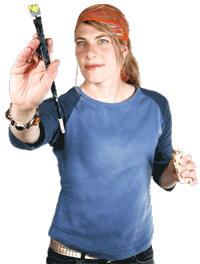At MusicalExpert, we're committed to delivering accurate, trustworthy information. Our expert-authored content is rigorously fact-checked and sourced from credible authorities. Discover how we uphold the highest standards in providing you with reliable knowledge.
What Is Turntablism?
Turntablism is the professional term given to the art form of creating original music with a traditional, plastic vinyl record spinning on a phonograph turntable. It originated most influentially from creative "disc jockeys" (DJ) spinning recorded music at dance parties in the late 1970s. DJ-ing is regarded as one of the foundational pillars of the urban culture that came to be called hip-hop, the others being Master of Ceremonies (MC-ing), break-dancing and graffiti art. More popularly used slang terms describe hip-hop as a street life of scratching, rapping, breaking and tagging, respectively. Scratching is actually just one of the many physically demanding techniques of manipulating a spinning disk to alter its original musical recording.
The original DJ's phonograph was a disk player with two turntables, but just one audio output channel. Among its controllers were slide levers called cross-faders that allowed the DJ to seamlessly fade out of a musical track on one recording while fading into a track on the opposite turntable. The recorded disks were made of hard vinyl plastic etched with irregular grooves that were direct transfers of the physical vibration of sound. A fine needle mounted on a freely moving arm tracked this groove to pick up the microscopic vibrations and re-amplify them as audible sound. This is the musical instrument of turntablism.

One of the first tricks of the pioneering DJ was to apply pressure on a turntable to stop its spin, creating a "break" of silence to a musical track. It required considerable timing to then release pressure and resume playback of the song without disrupting its rhythm. Partygoers adapted their dancing to this newly introduced cadence of breaking beats. Other DJs were quick to discover the technique of replaying short segments of music over and over by forcing a turntable counter clockwise to the exact position of the start of this segment. Releasing pressure would replay it.
The finger motion when executing this technique rapidly resembled "scratching" an itch. As this unique sound effect became more popular in mainstream music, turntablism came to be simply called scratching. With acceptance and legitimacy, more aspiring DJs meant more innovative new scratching techniques and corresponding sounds. Manufacturers of DJ equipment also responded to the physical and sonic demands of its new use as a musical instrument rather than a simple playback device.
An important improvement of the equipment came with the ability to more finely adjust each turntable’s rate of rotation. This meant that the musician, or turntablist, could manually match practically any two given disks to have the exact same beat. Both turntables could be played and manipulated at the same time with greater confidence of maintaining rhythmic coherence. The basic technique is called beatmatching.
When a sound is slowed down or sped up, its pitch changes. Equipment makers therefore combined the turntable with an audio mixer capable of correcting the pitch, or also otherwise creating new complementary tones. Beatmixing on such instruments has the additional benefit of usually having additional input channels for other musical devices such as programmable digital drum machines. Computers and digital audio processing technology has been a significant influence in turntablism. Pressure sensitive touchpads, "vinyl emulation" software and other applications are agents of evolution in this musical art.
AS FEATURED ON:
AS FEATURED ON:










Discuss this Article
Post your comments